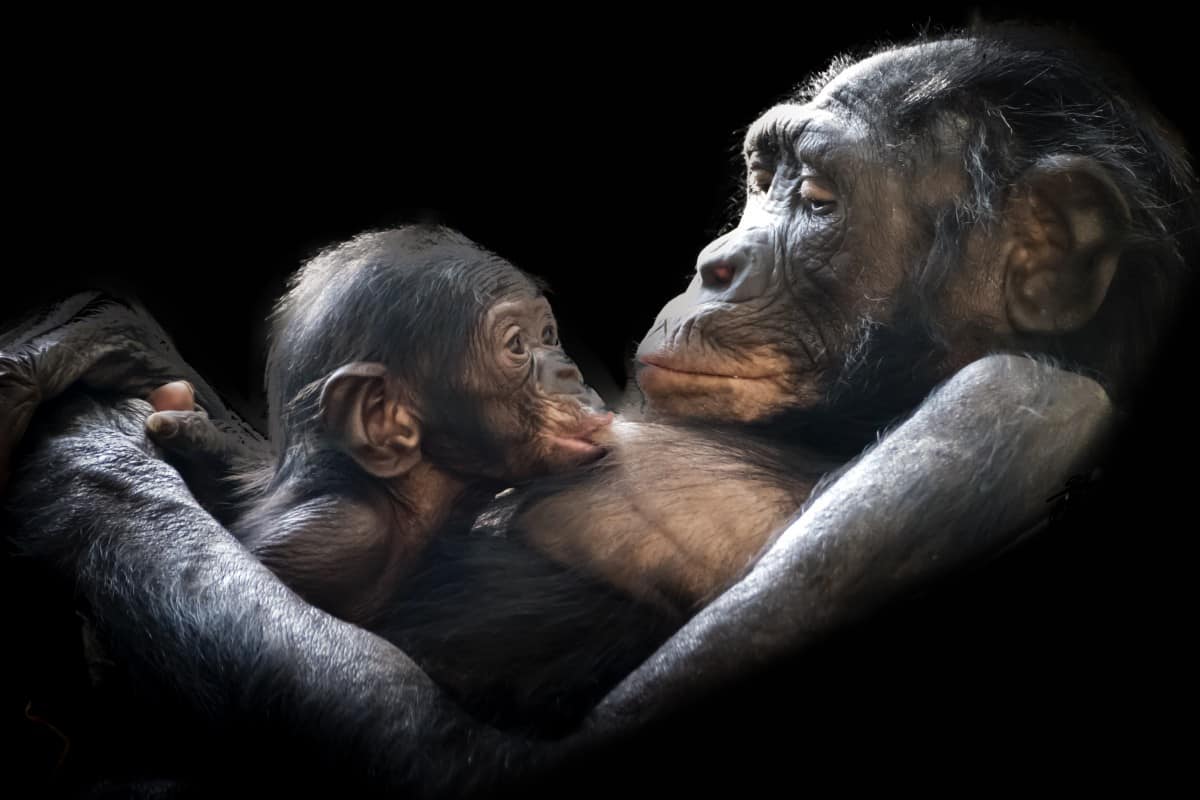It’s vital that new conservation areas be set up for all endangered and critically endangered great apes in Africa.
Africa’s great apes are set to lose vast tracts of their current range in the next 30 years.
The reason: climate change and human encroachment.
This assessment is according to a team of scientists who perused two decades’ worth of data on the population and conservation statuses of gorillas, chimpanzees and bonobos, as well as the threats facing them at several hundred sites across the continent.
The researchers also examined the effects that a changing climate, increased land use, and growing human populations in Africa will likely impact the ranges of endangered apes by mid-century.
Under a “best case” scenario mapped out by the scientists, we will have achieved lower carbon emissions and started mitigating climate change by 2050. Yet even in this scenario, they explain in a paper, great apes will lose an estimated 85% of their current range, half of which will lie outside protected areas such as national parks.
In the “worst case” scenario, our emissions will continue unabated, in which case great apes in Africa will lose a whopping 94% of their range, out of which 61% will be in unprotected areas.
Theoretically, once their current ranges come under increased threats great apes could migrate to new areas. However, warming temperatures will likely render lowland areas unsuitable for species such as mountain gorillas, even as conditions on mountainsides will increasingly resemble those that currently exist at lowlands.
“As climate change forces the different types of vegetation to essentially shift uphill, it means that all animals — not only great apes — that depend on particular habitat types will be forced to move uphill along with the vegetation, or become locally extinct,” explains Fiona Maisels of the Wildlife Conservation Society who worked on the study.
“And when the hills are low, many species, great and small, will not be able go higher than the land allows, and huge numbers of animals and plants will simply vanish,” she adds.
That said, “If great apes are able to physically move from the lowlands to the mountains, they may be able to survive, and even increase their range (depending on the species, and whether it is the best- or worst-case scenario),” the scientists note. “However, they may not be able to travel (disperse) away from the lowlands in the time remaining between today and 2050.”
In any event, it seems inevitable that wild gorillas, chimps and bonobos will lose large swathes of their current ranges in coming decades.
As a result, it’s vitally important that new conservation areas be set up across Africa for all endangered great apes (mountain gorillas, bonobos, Nigeria-Cameroon chimpanzees, eastern chimpanzees, and central chimpanzees) and critically endangered great apes (Cross River gorillas, Grauer’s gorillas, western lowland gorillas, and western chimpanzees).
“[M]assive range loss is widely expected outside protected areas, which reflects the insufficiency of the current network of protected areas in Africa to preserve suitable habitats for great apes and effectively connect great ape populations,” stresses Joana Carvalho, a postdoctoral researcher at the Faculty of Science of Liverpool John Moores University, who was the study’s lead author.
Yet it isn’t just people in Africa who can help the continent’s great apes survive and thrive in coming decades.
“There must be global responsibility for stopping the decline of great apes. Global consumption of natural resources extracted from ape range countries is a major driver of great ape decline,” explains Hjalmar Kuehl, from the German Centre for Integrative Biodiversity Research in Leipzig, Germany, who was an author of the study.
“All nations benefitting from these resources have a responsibility to ensure a better future for great apes, their habitats and the people living therein by developing more sustainable economies,” Kuehl says.
This story first appeared on Sustainability Times
South Africa Today
© 2021 Sustainability Times.
This article is licensed under a Creative Commons Attribution-ShareAlike 4.0 SA International License.












